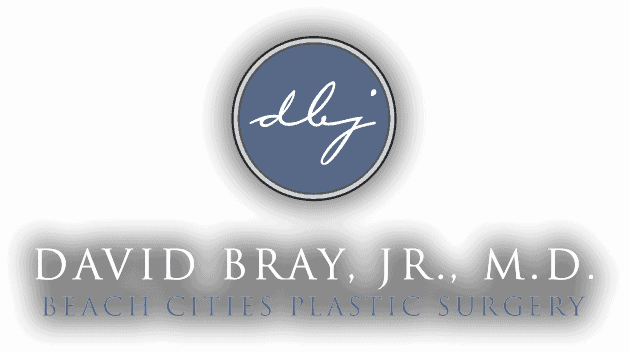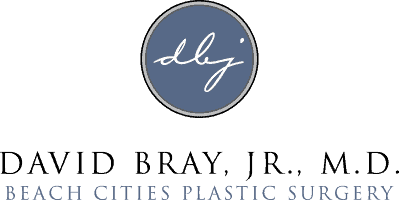Rhinoplasty Terms & Definitions
Ala of the nose: The rounded eminence of the nose that extends from the nasal tip to the upper lip.
Alar Contour Graft: A cartilage graft place along the nasal ala to provide support to ala and external valve.
Alar Flare: The widest point between the alar bases
Alar Groove: The groove that separates the nasal tip from the ala. The groove extends in an oblique direction above the ala.
Alar Wedge Excision: An elliptical excision of the ala intended to reduce alar flare.
Caudal: This refers to the inferior aspect of nasal structures
Caudal Septum: The inferior aspect of the nasal septum. This structure may deviate off the nasal spine resulting in nasal airway obstruction and external nasal deviation.
Cephalic: The superior aspect of nasal structures
Columella: The soft tissue structure at the inferior part of the nose that separates the nostrils.
Columellar Strut: A cartilage graft placed between the medial crura(the part of the lower lateral cartilage at the level of the columella). The graft may be used to increase nasal tip support.
Dorsum of the nose: The structure extending down the middle of the nose from the area between the eyes down to the nasal tip. A frequent concern of rhinoplasty patients is a dorsal nasal hump.
Dorsal Augmentation: The dorsum may be augmented with a dorsal implant or graft. Dorsal augmentation increases dorsal projection and may provide a more refined nasal dorsum. A variety of implants exist including silicone implants. Dorsal grafts may be composed of septal, ear, or rib cartilage. A dorsal graft may also be composed of diced cartilage wrapped in fascia.
External Nasal Valve: The external opening of the nostril. The nasal airway may be compromised in patients who have collapse of the nostrils/external nasal valve. Nasal airway reconstruction may be indicated in these patients. Alar contour grafts or lateral crural strut grafts may be used to support the external nasal valve.
Internal Nasal Valve: The area inside the nose where the inferior edge of the upper lateral cartilage and the nasal septum meet. The internal nasal valve is the area of greatest resistance in the airway. Internal valve problems may be the result of septal deviation, narrowing of the internal valve angle, turbinate hypertrophy, or lateral wall collapse. Patients presenting with airway obstruction related to the internal nasal valve are often candidates for surgical correction. Spreader grafts may be used to correct internal valve collapse.
Interdomal suture: A suture placed through the medial aspect of the domes to narrow the interdomal distance
Keystone Area: Junction of the perpendicular plate of the ethmoid with the dorsal septum
Lateral Crural Strut Graft: A cartilage graft placed under the lateral crura and extending toward the pyriform aperture(the external bony opening of the nose). The graft may be used to improve the boxy nasal tip, malpositioned lateral crura, alar rim retraction, and alar rim collapse.
Lower Lateral Cartilages: The nasal tip cartilages. The lower lateral cartilages consist of the medial, middle, and lateral crura.
Nasal Septum: The structure that divides the two nasal airways. The septum consists of the quadrangular cartilage, the perpendicular plate of the ethmoid, and the vomer. These structures are covered on both sides by nasal mucosa. Septal deviations are a common cause of nasal airway obstruction. Deviation of the septum may also cause external nasal deviation and deformity. Septoplasty is the surgery performed to correct nasal septal deviations.
Nasal Spine: The midline bone projection at the inferior part of the nose. The caudal septum may be located over the nasal spine.
Radix: The area where the frontal bone and the dorsum of the nose meet. This angle connects the brow and the dorsum through a concave curve. The radix should be located at a level between the upper eyelid lashes and the supratarsal fold. Changes in the position of the radix may make the nose appear shorter or longer.
Spreader Graft: A cartilage graft placed between the upper lateral cartilage and the dorsal septum. This graft may be used to correct internal nasal valve collapse, to straighten the dorsal septum, or to increase the width of the middle third of the nose.
Tip Graft: A cartilage graft placed over the nasal tip to enhance projection and definition of the nasal tip.
Transdomal Suture: A suture placed across the nasal tip dome to refine and shape the nasal tip
Turbinates: Three long and narrow boney projections from the lateral nasal wall. The inferior turbinate is the largest turbinate and may contribute to nasal airway obstruction. The middle turbinate may also contribute to airway obstruction and may be enlarged as a result of a concha bullosa. The third turbinate is the superior turbinate. The turbinates are covered by nasal mucosa and assist in humidifying and heating air as it passes through the nose. The inferior turbinate may be enlarged as a result of excessive boney projection or soft tissue swelling. Treatment of enlarged turbinates may be indicated in patients with nasal airway obstruction.
Upper Lateral Cartilages: The paired cartilages that make up the lateral nasal wall. The upper lateral cartilages are between the lower lateral cartilages and the nasal bones at the level of the middle third of the nose. Collapse of the upper lateral cartilages may lead to airway obstruction and internal nasal valve collapse.


